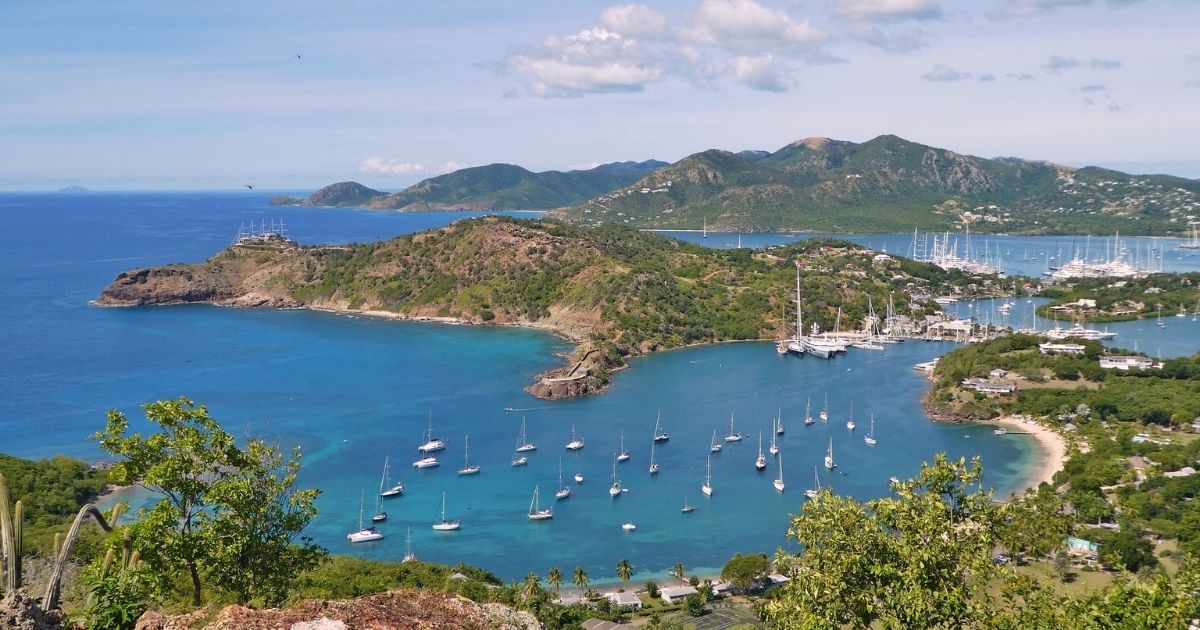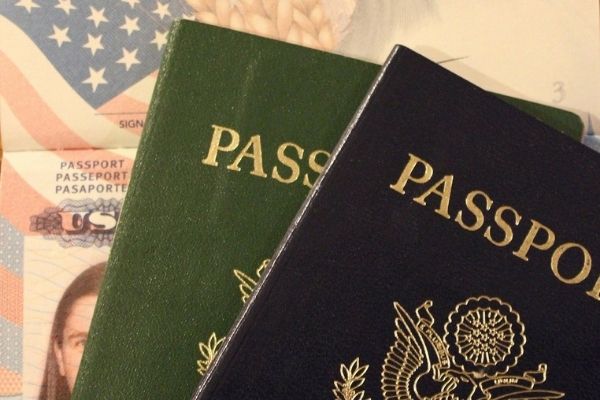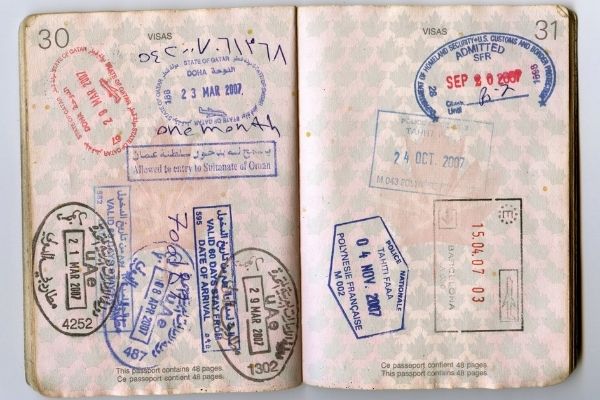
There are many grey areas in the yachting industry, but perhaps none as perpetually frustrating as visas, particularly the B1B2 sought by non-US yacht crew voyaging Stateside.
Where you are from, where your boat is flagged, where you join a vessel, where it is going… there are so many variables that every inherently simple question seems to have a thousand answers, and a thousand more blog threads addressing it.
As a crew agent for many years in Antibes, I spoke to concerned crew nearly every day. Around this time each year they would collapse in the chair in front of me and disclose their dreams of working on a boat in the Caribbean.
But how should they go about it? Did they need a B1B2? Was it possible to get one? Since there was no clear gospel on the topic, we were often seen as the experts – trying to counsel our adoptive crew children through the smartest course of action without sounding too definitive or giving too much false hope.
As an American myself I am all too aware of the complicated policies of the United States. When speaking to crew about their experiences in trying to obtain a B1B2 visa, there's a sense that the process is totally random, that there are no clear rules and your fate is ultimately determined by whether or not the US Embassy worker you chance upon has had her coffee that morning.
There's probably a grain of truth to that, but we all know there are hoops to jump through on every level of administration, especially when it comes to immigration. I am sympathetic to everyone’s frustration, but I have also jumped through all manner of French legislative hoops and can say without hesitation that it is not very different.
The disheartening fact we must all accept is this: there are rules that must be followed, fees that must be paid, and documents that must be produced. No matter where you are tying to go.
The first hurdle is to understand that there is no US visa specifically created for the world of yachting. As we all know, yachting is a niche industry that lends itself to a very particular and transient lifestyle. The B1B2, though it is the most appropriate for crew working (or looking for work) on yachts, was in no way created for that purpose.
According to the US Department of State, the B1B2 is classified as a visitor visa. This means that it is a non-immigrant visa for people wishing to enter the United States temporarily. There is a B1 visa for those who wish to enter for business purposes and a B2 visa for those coming for pleasure or tourism. A B1B2 is, obviously, a combination of the two.
The B1B2 is not a work permit, nor is it equivalent in any way to a Green Card. It is also different from a C1/D visa.

Without confusing the issue too much, the C1/D is technically a “crew” visa, but it is primarily intended for airline personnel and commercial seafarers i.e. cruise ship, cargo, and ferry employees.
Though it might seem like this is your best bet, it is generally not sufficient. “Commercial” in this context is defined as a plane or vessel with a set itinerary.
Whether a yacht is registered commercially or for pleasure, there is no set itinerary, and so it is therefore considered a private means of transport. In the eyes of the US government, the entire yachting industry is a private industry (remember that!), thus a B1B2 is necessary.
Let’s get back to the classic scenario. The Caribbean season is coming up. You have been working, or looking for work in the Med. Perhaps you are lucky enough to have a job lined up on a yacht heading to the US. Perhaps you want to head that way and try your luck. Yes, you do need a B1B2.
So how do crew get a B1B2 visa?
-
The first thing you need to do is fill out the application Form DS-160. You can find it here. You will be asked to upload your photo to the form. Be sure to print the confirmation page to take to your appointment.
-
Now you must schedule an appointment/interview at a US Embassy or Consulate. Generally this is done in your city of residence, but in the case of yacht crew it could be anywhere. There are always rumours floating around about how one Embassy is more or less strict than another, but if you are prepared and polite, it really shouldn’t make a difference. The time you will have to wait to get an appointment, however, will vary depending on city and the time of year. You can find approximate waiting times for different locations here.
-
Next you must pay the non-refundable application fee of 160 Euros. As unfair as it might seem, there might be additional issuance fees depending on your nationality. Be sure to print the payment confirmation to take to your appointment.
-
Get your documents ready. Check the website of the Consulate or Embassy where you have scheduled your interview to see what they specifically request. You cannot be too prepared, so if you think it might be useful, take it along! The obvious and obligatory items are your passport (which must be valid at least 6 months beyond the length of your stay in the US), confirmation of application and payment, and a photo if you didn’t manage to upload one.
 Many will tell you that you need an employment letter from a yacht in order to obtain the B1B2. Though it will certainly help if you have one, it is not necessary. More than proof of employment, they will be interested in proof that you DO NOT intend on staying in the US. Your biggest chance of being refused is if you are not able to prove strong ties to your home, whether they are familial, social, or economic. This proof can come in the form of bank or mortgage statements, house bills, photos of your wife or children back home… anything that will make them believe you are not planning on abandoning your home and setting up shop in the USA.
Many will tell you that you need an employment letter from a yacht in order to obtain the B1B2. Though it will certainly help if you have one, it is not necessary. More than proof of employment, they will be interested in proof that you DO NOT intend on staying in the US. Your biggest chance of being refused is if you are not able to prove strong ties to your home, whether they are familial, social, or economic. This proof can come in the form of bank or mortgage statements, house bills, photos of your wife or children back home… anything that will make them believe you are not planning on abandoning your home and setting up shop in the USA.
In speaking with crew about their experiences, B1B2 interviews could last anywhere from five minutes to several hours. This is where the random bit comes in, and unfortunately there is nothing that can be done to plan for it.
The best advice is to be honest, prepared, and polite. If you have a job lined up, great. But regardless, be careful when describing your situation. If you are going to be working on a commercially registered vessel, don’t volunteer the name of the boat unless directly asked. Especially curious Embassy workers have been known to Google certain yachts to find out how they are registered. If you have employment papers, try to request them without the commercial or charter status mentioned.
Do not lie, but do avoid using these forbidden C words! You risk creating a misunderstanding that could lead to a refusal. Remember that as far as they are concerned the yachting industry is completely private. You are simply requesting a B1B2 visitor visa in order to join a private vessel in US waters.
The Foreign Affairs Manual (FAM) says that a B1 visa is available to any “crewmen of a private yacht who are able to establish that they have a residence abroad which they do not intend to abandon, regardless of the nationality of the private yacht. The yacht is to sail out of a foreign home port and cruising in US waters for more than 29 days.” The FAM is basically the guide book for all State Department and Foreign Service staff, so if you can prove that you fit this description, there is no reason to worry.
Let’s assume that all goes as planned and you walk away smiling with a visa in your pocket. Most crew think that they are in the clear at this point, but there are a few other important details to remember. First of all, which visa were you issued? The combined B1B2 is very common, but it is also possible to receive either a B1 (business), for example if you already have a job lined up, or a simple B2, for pleasure only. This is extremely important to be aware of!
 When you pass through Customs and Border Control in the US, your passport will be stamped with your entry date but also with the date at which time you MUST leave US soil. Depending on your situation, this could be up to 6 months from when you arrive, but it is at the discretion of the officer on duty at the time so be nice! This information used to be recorded on a paper I-94 form but recently the process has been made electronic for air and sea travellers. If you would like to obtain a paper copy of your I-94 or check your arrival/departure record, you can visit here.
When you pass through Customs and Border Control in the US, your passport will be stamped with your entry date but also with the date at which time you MUST leave US soil. Depending on your situation, this could be up to 6 months from when you arrive, but it is at the discretion of the officer on duty at the time so be nice! This information used to be recorded on a paper I-94 form but recently the process has been made electronic for air and sea travellers. If you would like to obtain a paper copy of your I-94 or check your arrival/departure record, you can visit here.
In addition, they will record the status of your entry, i.e. whether you entered for business (B1) or for pleasure (B2). If you are headed to the US without a job, it is imperative that you enter as a tourist, in other words, with B2 status. With this tourist status, crew are lawfully allowed to register with crew agencies and look for work. However, it is important to note they you are not legally allowed to accept daywork.
And the fine print doesn’t end there. Not only are you not technically allowed to daywork, if you are offered a job you are not legally allowed to accept it as a B2 tourist. This requires exiting the US and returning, with boat employment papers (from a non-US flagged boat of course), and being stamped in with B1 status.
Let’s say you have followed all the rules so far but you need more time. Your B1B2 is still valid, but the date on your I-94 is running out. It is possible to extend your stay, but you must file a request (Form I-539) with the US Citizenship and Immigration Services. And you must do this before your time expires - at least 45 days before to be safe. Under no circumstances should you ever outstay the departure date on your electronic I-94. Even a day or two could mean that you are denied entry the next time around.
If you are one of the lucky ones who manages to land a job and sail away from all this mess, you should make sure that your departure from the US is recorded by the Customs and Border Patrol so that you are successfully checked out of the country. If you were previously issued a paper I-94, it should be returned to CBP. If your I-94 was electronically issued, check your status to make sure it is correct. I realize that this may seem like one slap in the face too many, but the risk of doing otherwise is really not worth it.
If you leave the country on a private vessel (which is usually the case), and your departure is never recorded, the next time you apply for admission into the US you may be accused of having overstayed your welcome the last time. If this happens, the shiny visa that you worked so hard for could be revoked, and you might be sent back to where you came from.
If you've stayed with me this far, you're probably feeling a bit sick, considering other professions, or simply cursing me and all my American-ness. It is easy to be overwhelmed and disheartened by this procedure which is far from streamlined, but don’t let it get you down. In my opinion, the problems that have surrounded this B1B2 issue for so long are due primarily to a lack of information and preparation. So consider yourself armed with the facts. You know what you need and you know what to say. Now get out there and make me proud.
*Image credits: Pixabay; Wikimedia Commons, pixabay.com

Post your comment
You cannot post comments until you have logged in.
Login to post a commentComments
Comment by: Sandro Fusari - 18 Nov 2020, 18:15 (3 years ago)
Hi. I wonder if you can help me. I worked many years in cruiselines until early this year. I have a C1/D visa and wish to get a B1B2 visa, to go and work in private yachts. I don't have a job contract yet. Unfortunately, about 30 years ago I went to the States with a tourist visa, but prolonged my permanence over the allowed time. It all seemed ok then, and didn't even realised there was a problem. Now every time I pass customs I get stopped for checks, as the problem seems to reappear, but without consequences. Do you think I will have problems with my application?
Comment by: Jon Daley - 2 Oct 2020, 04:48 (4 years ago)
Hi there so with the b1 b2 if I went to US and got stamped in as b2 (no job contract) but was offered a job whilst there I would then fly to the nearest foreign country then re enter the US with contract and get stamped back in under b1? Many thanks
Comment by: William Gray - 13 Apr 2020, 18:52 (4 years ago)
Hello,
Do you know if B1B2 visa is available at US consulate in Marseille?
Thank you
No one has commented on this page yet.
RSS feed for comments on this page | RSS feed for all comments